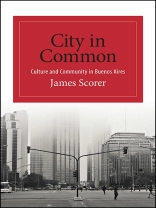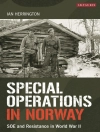Addresses ways that cultural imaginaries point toward alternative urban futures.
In this book James Scorer argues that culture remains a force for imagining inclusive urban futures based around what inhabitants of the city have in common. Using Buenos Aires as his case study, Scorer takes the urban commons to be those aspects of the city that are shared and used by its various communities. Exploring a hugely diverse set of works, including literature, film, and comics, and engaging with urban theory, political philosophy, and Latin American cultural studies, City in Common paints a portrait of the city caught between opposing forces. Scorer seeks out alternatives to the current trend in analysis of urban culture to read Buenos Aires purely through the lens of segregation, division, and enclosure. Instead, he argues that urban imaginaries can and often do offer visions of more open communities and more inclusive urban futures.
Tabela de Conteúdo
List of Illustrations
Acknowledgments
Introduction
1. The City in Common
2. Dictatorship, Exclusion, and Remembering in Common
3. Surviving the City in Post-Dictatorship Argentine Comics
4. Neoliberal Urbanism: Anticommons in Common
5. Neighbors and Strangers in Gran Buenos Aires
6. Transforming the Commons, Recycling the City
7. Shantytowns: Beyond the Pale?
Epilogue
Notes
Bibliography
Filmography
Index
Sobre o autor
James Scorer is Lecturer in Latin American Cultural Studies at the University of Manchester, United Kingdom.












